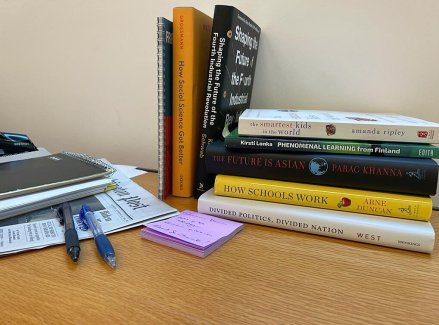Articles

31.10.2023
Career opportunities, the cost of studying, and global politics influence the flow of talent
The United States faces a workforce shortage that many see as the most serious bottleneck towards economic growth and technological development. The U.S., like many European countries including Finland, seeks to attract foreign talent to address the workforce issues. The factors affecting the global mobility of students and young professionals have undergone a number of changes in the past few years.
Despite high and still rising tuition fees, U.S. universities have remained popular destinations for foreign students. Official statistics will be published mid-November, but estimates suggest that the number of international students, especially exchange students, is rising to a higher level than it was before the pandemic. Indeed, the U.S. is still in a league of its own as an attractor of talent and as a science and technology powerhouse integrating foreign labor into its economy.
China has long been the biggest country of origin for international students, but its growing tensions with the United States have begun to show in the numbers. Still, about 30% of foreign students in the U.S. are Chinese, and about 20% are Indian, the proportion of Indian students currently growing at the expense of the Chinese.
According to survey responses, a great majority of foreign students say they want to stay in the US labor market. Many of them succeed in doing that. In technology sectors that are suffering from labor shortages in the US, American wages and employment opportunities offer the promise of the possibility of paying back student loans.
Global and national politics move talent
As in many countries, foreign labor is not a politically simple issue within the United States. The current geopolitical divide and suspicions can result in contradicting pressures for policymakers. For example, we are currently waiting for the Supreme Court to decide whether international graduates should be allowed to do training in the US through the Optional Practical Training Program (OPT). At the same time, the U.S. labor market’s need to attract people with precisely such qualifications is widely recognized.
On global trade policy and especially the relationship between the U.S. and China, the official tone has softened somewhat in recent months. Instead of de-coupling from China in the economy, there is a move towards de-risking. This may be motivated by a desire to calm confrontation or simply an honest assessment of how dependent the US economy and production chains ultimately are on China.
The same dependency applies to universities, whose economy is largely based on paying for education and tuition fees collected from foreign students. Without talent born abroad, the amount of knowledge and skills available to the US would also plummet. For example, in mathematics and computer science, engineering, and life sciences, the majority of the doctoral workforce is foreign-born. China and India are also their most common countries of origin.
High study costs and potential bargains
The availability of workforce and economic growth is a well-recognized challenge on both the federal and state levels. That is why, for example, California, will launch a pilot program between 2024 to 2029 that will entitle low-income Mexicans living near the California border to in-state tuition at certain community colleges. At Southwestern College, for example, Mexican in-state tuition will be $1,400 instead of $6,000 (out-of-state fee).
If compared with the annual tuition fees of U.S. universities often ranging from $10,000-20,000 (public universities’ in-state fees) to closer to $100,000 (private universities, with boarding fees), such programs sound like real bargains. Their prestige does not match with a Harvard or a Stanford, but they offer entry points to the vibrant labor market of the U.S., and to studying advanced degrees in more prestigious or specialized institutions.
In the long run, U.S. higher education and science have been effective integrators of global talent. A visit to the campus of an American research university or a federal science institution proves that students and scientists, including the top level of institutions, are a truly multinational group.
Photo: Many still consider studying for a degree at a U.S. university a passport to one of the most lucrative and adaptive labor markets in the world. Photo taken by Petri Koikkalainen
Stay in touch with Petri Koikkalainen, Counselor for Science and Higher Education, Washington DC and Junior Advisor Sofia Tuovinen, Washington DC.
